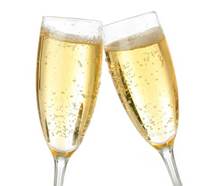The Aron, or Ark, of the Sanctuary was fashioned in a most sophisticated way. In addition to the crown and ornaments adorning its top, the Aron was fashioned of three different boxes. The inner box was made of gold, the middle  box was made of wood, and the outer box was made of gold. What is fascinating is that the wooden box of the Aron was covered, not only on the outside with gold, but also on the inside. Additionally remarkable is that the middle box of wood wasn’t simply covered with gold on both sides. Instead the Aron was constructed of separate boxes, as if to call attention to the message of each of the three boxes.
box was made of wood, and the outer box was made of gold. What is fascinating is that the wooden box of the Aron was covered, not only on the outside with gold, but also on the inside. Additionally remarkable is that the middle box of wood wasn’t simply covered with gold on both sides. Instead the Aron was constructed of separate boxes, as if to call attention to the message of each of the three boxes.
The commentaries explain that the Aron represents Torah. Not only is Torah practiced when others can see it, but the authentic Torah experience is when the person is permeated with Torah through and through. As the Talmud expresses it, “The inside must be like the outside.”
Still, even when both the outside and inside are both equally inlaid with gold, the realization remains that at his core, the human being is still made of “wood,” a material that eventually rots . At his essence the human being is mortal, fraught with frailties and shortcomings. In fact, the greatness of a human in achieving “the gold” is only appreciated when we take the frailties and challenges of mankind into account.
The story is told of a simple Jew who was sitting in a study hall weeping over the text of the High Holiday prayers that he was reading. “Man originates from dirt, and his end will be dirt.” A great Rabbi entered and saw the Jew crying. When the Rabbi realized the reason for his sadness, the Rabbi declared, “Actually, that is reason to rejoice. Don’t you see the gift of life that G-d has given us. Man originates from dirt, and his end will be dirt. But in between he has the opportunity to make a L’Chayim. In between- while the soul is united with the body- there is so much good that we can do.”
Taking the theme of the boxes one step further we note that sometimes, in the process of trying to do good, we may find the need to emphasize the inner box of gold, and at other times the outer box. There are times that one may need to emphasize private mitzvos such as personal character growth, and family development. Other times a person may emphasize public mitzvos such as tzedakah collections, and community development. This is fine during the growth process. But the Aron teaches us that for growth of Torah to be well rounded and complete, it must be balanced with gold both inside and outside.
An insightful writer once described Rabbi Moshe Feinstein as, “A great man, about whom there is nothing exceptional.” He explained that Rabbi Feinstein was so well balanced that there was no one area in his life that stood out as unusual. His scholarship matched his piety. His commitment to communal life was matched by his commitment to his family. This is the goal of life as illustrated in the Aron.
The message of the three boxes of the Aron is that sincere growth in Torah requires development both inside and outside. Those achievements are accentuated and appreciated when we realize that this impressive golden vessel is, at its essence, a base of wood, that has been gifted with the ability to say, “L’Chayim!”


0 Comments